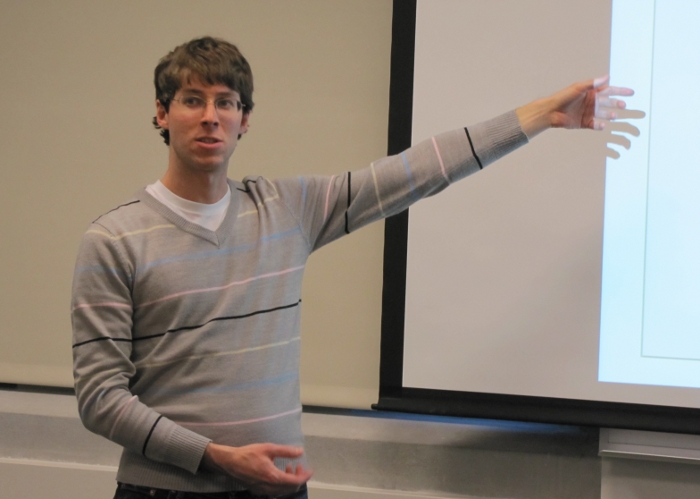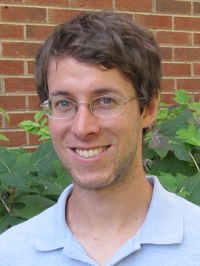NIMBioS Seminar Series
In conjunction with the interdisciplinary activities of the National Institute for Mathematical and Biological Synthesis (NIMBioS), a seminar series on topics in mathematical biology will be hosted at NIMBioS every other Tuesday at 3:30 p.m. (unless otherwise noted) in the Hallam Auditorium, Room 206, Claxton Building, 1122 Volunteer Blvd. Seminar speakers will focus on their research initiatives at the interface of mathematics and many areas of the life sciences. Light refreshments will be served in the 1st floor visitor breakroom beginning 30 minutes before each talk. Faculty and students from across the UT community are welcome to join us.
Time/Date: Tuesday, January 14, 2014, 3:30 p.m.*
Location:
Room 205, Claxton Building, 1122 Volunteer Blvd.
Speaker:
Dr. Sean Hoban, NIMBioS Postdoctoral Fellow
Topic:
How to plan an effective and efficient population genetics sampling strategy: Markers, samples, and spatial considerations
Abstract:
Genetic biodiversity contributes to species' evolutionary potential, ecosystem function, and human prosperity (e.g., agriculture). Preserving genetic resources during rapid environmental change is a pressing scientific and societal challenge. To meet this challenge, it is important to ensure that conservation researchers utilize well-designed and robust analytical methods and sampling/monitoring protocols. Unfortunately, many genetic studies are undertaken without knowledge of how many populations, genetic markers or individuals are needed. With colleagues, I developed software (Hoban et al. 2013, Methods in Ecology and Evolution) that calculates power of proposed sampling strategies for five study goals, including performing genetic assignment tests, using ancient DNA, and detecting genetic differentiation. I will explain how I used the software to highlight several concerns seldom considered during study planning: (a) power is rarely a linear function of adding markers/samples; (b) power is situation (species and history) specific; (c) some signals are too weak to detect. I will also explain my current interests in planning ex situ conservation collections (e.g., seed banks). At NIMBioS, I plan to optimize seed sampling from plant populations under local and range-wide population structure, while considering various strategies including those that are spatially biased or otherwise restricted. This project will result in general guidelines as well as software for customizing collections to particular species.
*Join us for refreshments at 3 p.m. in the 1st floor visitor breakroom.
Seminar Flyer (pdf)
For more information about this and other NIMBioS Seminars, visit /seminars.

NIMBioS
1122 Volunteer Blvd., Suite 106
University of Tennessee
Knoxville,
TN 37996-3410
PH: (865) 974-9334
FAX: (865) 974-9461
Contact NIMBioS



